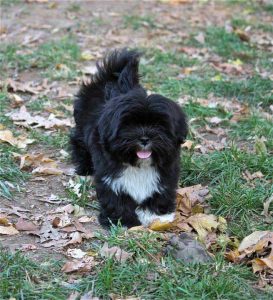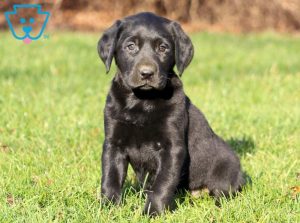Ensuring your dog has a secure and comfortable yard or living space is crucial for their safety, happiness, and well-being. A well-planned environment not only prevents your dog from escaping but also protects them from potential hazards. This guide will provide you with comprehensive steps and tips to create a secure yard or living space for your dog.
1. Assessing the Yard or Living Space
– Inspect the Area:
- Thoroughly inspect your yard or living space for any potential escape routes or hazards. Look for gaps in fences, broken boards, or weak spots.
– Measure the Space:
- Ensure the area is large enough to accommodate your dog’s size and energy level. Larger dogs or high-energy breeds may need more space to run and play.
2. Secure Fencing
– Choose the Right Fence:
- Select a fence that is appropriate for your dog’s size and jumping ability. Typically, a fence height of at least 6 feet is recommended for larger or more agile dogs.
– Ensure Stability:
- Make sure the fence is sturdy and well-anchored to prevent it from being knocked over or dug under. Reinforce any weak spots.
– Check for Gaps:
- Inspect the entire perimeter for gaps or holes that your dog could squeeze through. Pay special attention to gates and ensure they latch securely.
3. Preventing Digging Escapes
– Bury the Fence:
- To prevent your dog from digging under the fence, bury the bottom of the fence at least 12 inches into the ground or install a concrete footer.
– Digging Deterrents:
- Place large rocks or bricks along the fence line or use a buried chicken wire to deter digging.
4. Safe Landscaping and Plants
– Choose Dog-Friendly Plants:
- Avoid toxic plants that could harm your dog if ingested. Opt for dog-friendly plants and grasses.
– Avoid Harmful Mulch:
- Avoid using cocoa mulch, which is toxic to dogs. Instead, use pine, cedar, or other non-toxic mulch options.
– Remove Hazards:
- Remove any sharp objects, thorny bushes, or hazardous materials from the yard.
5. Providing Shelter and Comfort
– Dog House or Shelter:
- Provide a dog house or sheltered area where your dog can seek shade and protection from the elements. Ensure it is well-ventilated and insulated.
– Comfortable Bedding:
- Place comfortable bedding inside the shelter to keep your dog warm and cozy.
6. Secure Living Space Indoors
– Safe Sleeping Area:
- Designate a safe, quiet area inside your home for your dog to sleep. Use a crate or dog bed in a low-traffic area to provide a sense of security.
– Puppy-Proofing:
- Remove any hazards such as electrical cords, small objects that can be swallowed, and toxic substances from your dog’s reach.
7. Interactive and Enriching Environment
– Toys and Activities:
- Provide a variety of toys and activities to keep your dog mentally and physically stimulated. Rotate toys regularly to keep them interesting.
– Obstacle Course:
- Create an obstacle course or play area with tunnels, ramps, and agility equipment to keep your dog entertained and active.
8. Supervision and Training
– Supervise Outdoor Time:
- Always supervise your dog when they are in the yard, especially if they are prone to escaping or digging.
– Training Commands:
- Train your dog with basic commands such as “stay,” “come,” and “leave it.” This can help you manage their behavior and prevent escapes.
9. Secure Entry and Exit Points
– Secure Gates:
- Ensure all gates are securely latched and locked. Consider installing self-closing hinges or locks that are out of your dog’s reach.
– Beware of Open Doors:
- Be mindful of doors leading to the outside. Teach your dog to wait before exiting to prevent them from bolting out.
10. Monitoring and Maintenance
– Regular Inspections:
- Regularly inspect the yard and living space for any new hazards or potential escape routes. Address any issues immediately.
– Maintain Cleanliness:
- Keep the yard clean by regularly picking up waste and removing debris. This helps maintain a healthy environment for your dog.
Conclusion
Creating a secure yard or living space for your dog involves careful planning and regular maintenance. By providing a safe, comfortable, and stimulating environment, you can ensure your dog remains happy and healthy while preventing potential escapes and accidents. Always stay vigilant and make adjustments as needed to accommodate your dog’s changing needs and behaviors.
FAQs
1. How high should a fence be to keep my dog secure?
- Generally, a fence should be at least 6 feet high to prevent larger or more agile dogs from jumping over it.
2. What plants are toxic to dogs?
- Common toxic plants include azaleas, lilies, oleander, and sago palm. Always check if a plant is dog-friendly before adding it to your yard.
3. How can I stop my dog from digging under the fence?
- Bury the fence at least 12 inches deep, use digging deterrents like rocks or chicken wire, and provide alternative digging spots with a sandbox.
4. What materials are safe for dog bedding?
- Use non-toxic, hypoallergenic materials such as cotton, memory foam, or orthopedic foam for dog bedding.
5. How can I make my indoor living space safe for my dog?
- Puppy-proof the area by removing hazards like electrical cords, small objects, and toxic substances. Use baby gates to restrict access to unsafe areas.


